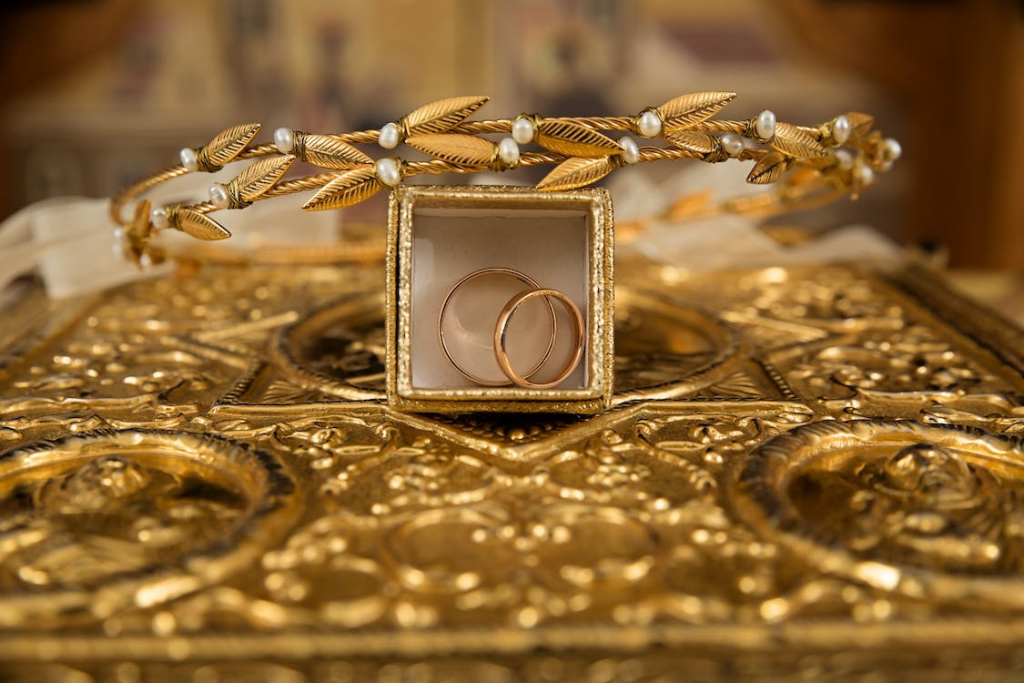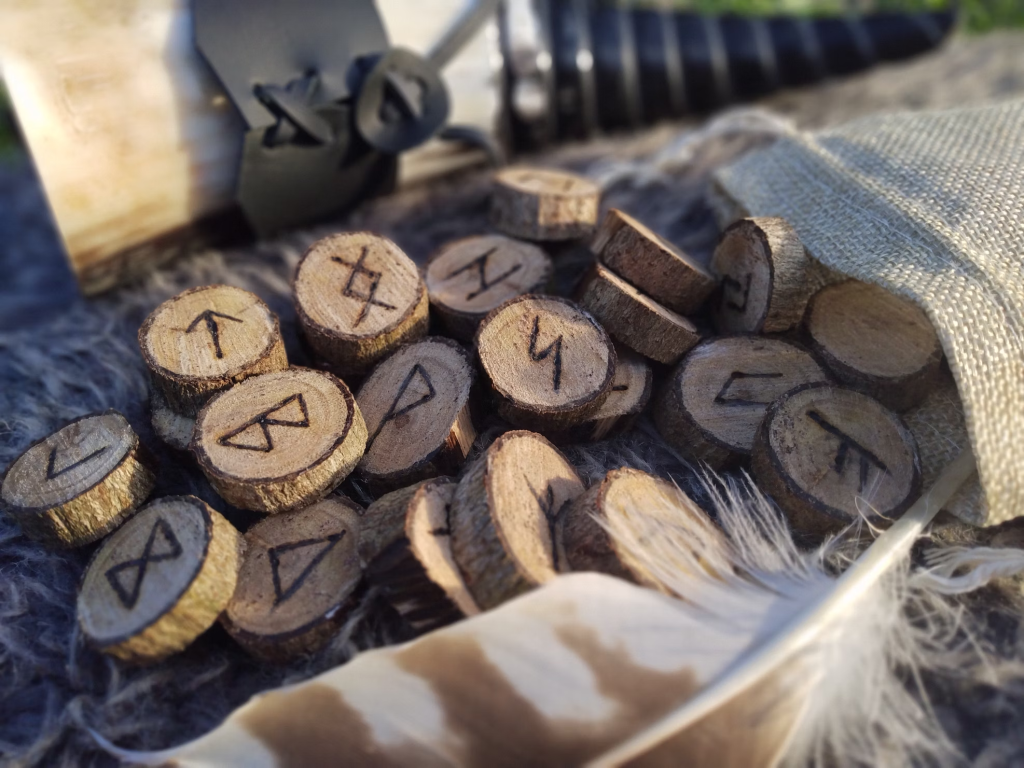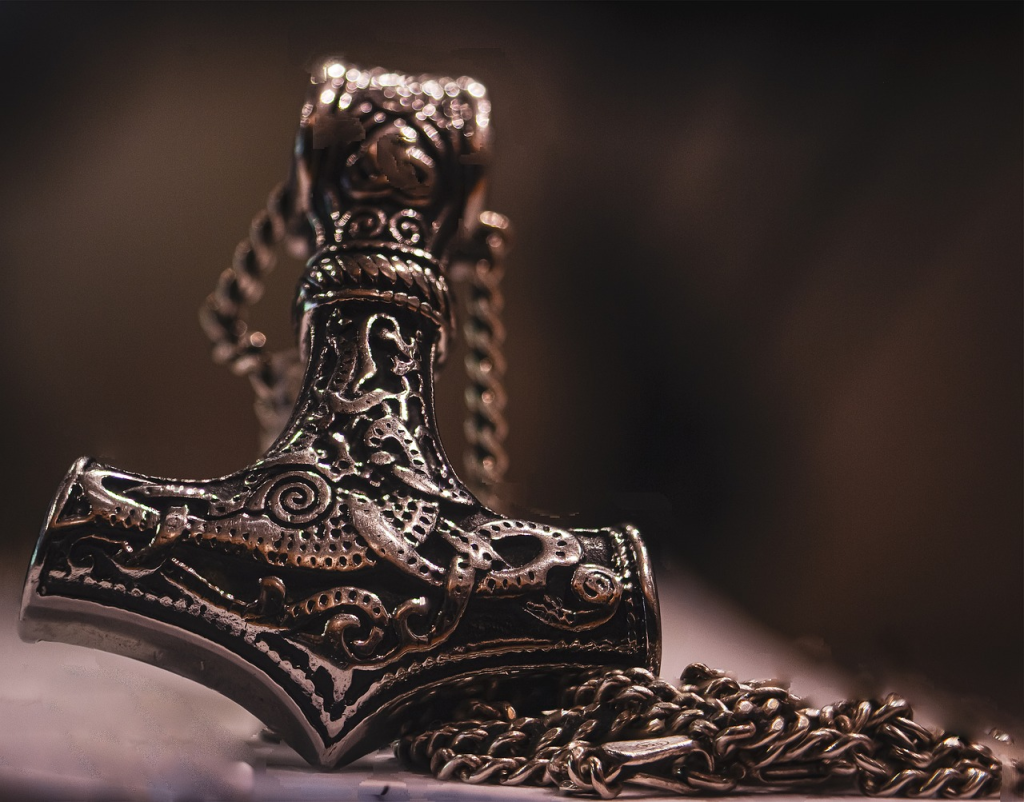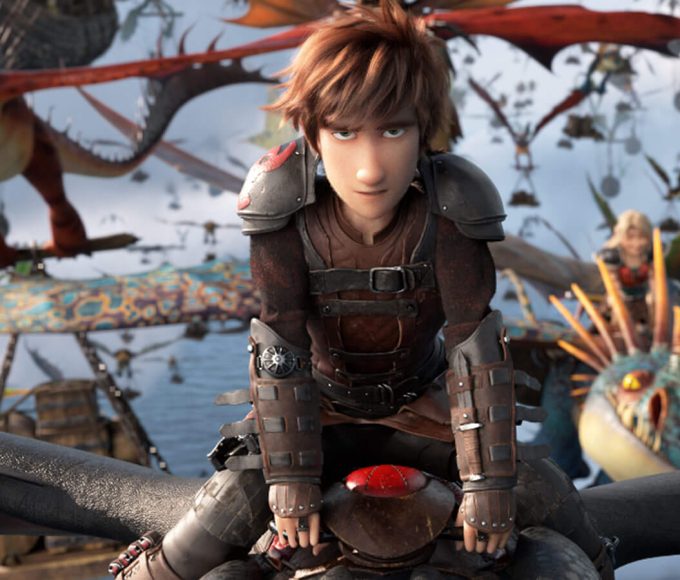Strength and stamina were the prominent virtues of Vikings; their culture and lifestyle showcased their dominance and resilience. They left behind a rich legacy that continues to inspire us, represented notably through their exceptional Viking jewelry.
Vikings crafted rings, brooches, pendants, and bracelets—often depicting scenes from their vast mythology—to decorate their body and connect with higher forces. These pieces were not only beautiful but also full of profound meaning, symbolism, and sometimes even used for protection and good luck.

Viking jewelry was not merely a show of wealth. It had spiritual and practical significance, often as tokens of faith or a display of status. Today, we use jewelry in much the same fashion, so why not take advantage of the Norse designs?
This guide examines the captivating history of Viking jewelry, exploring the symbols that adorned their pieces, the meaning behind each uniquely crafted item, and how those things have been translated to the modern day.
1. History of Viking Jewelry
The Vikings were renowned seafarers from the Scandinavian regions of Norway, Denmark, and Sweden. Based in the Viking Age (approximately 800-1050 AD), they left behind a rich tapestry of art and culture that continues to fascinate us today.
Jewelry crafted during the Viking Age reflected the Norsemen’s ability to forge beautifully intricate designs from various metals, including iron, bronze, silver, and occasionally gold.
The Hiddensee treasure, for instance, is one of the most impressive archaeological finds of Viking jewelry. Discovered in 1873 on an island in the Baltic Sea, it included 16 items, including a neck ring, brooch, and 14 pendants of pure gold.

Scholars estimate that it belonged to the family of Harald Gormsson—better known as Bluetooth—a king of Denmark and Norway in the tenth century.
Despite their reputation as fearsome warriors, the Vikings were highly-skill craftsmen. They paid great attention to detail when creating their jewelry. The intricate knotwork, detailed animal motifs, and calligraphic runes found on many pieces demonstrate their artistic sensibilities and profound connection to their mythology and deities.
2. Types of Viking Jewelry
Viking jewelry encompassed a wide range of items, each with significance and purpose. These creative expressions not only showcased Viking craftsmanship but also their rich belief system and social structures.
Here we explore some of the most popular items of Viking jewelry:
2.1 Viking Rings
Vikings wore rings with striking designs, often featuring knotwork or symbols of mythology.
Not only were these worn on their fingers, but also on their arms. Arm rings, also known as armbands, were often used for ceremonial purposes or given by a Jarl (a noble) to his followers as a token of appreciation or loyalty.
2.2 Viking Necklaces
Necklaces and amulets were another prominent feature in Viking jewelry. The Viking necklaces could be simple chains or be adorned with beads and pendants depicting gods, animals, or symbols from their mythology.
An excellent example of this is the Mjolnir, a hammer-shaped charm representing the weapon of Thor, the god of thunder. Generally speaking, wearing it was believed to bring protection and strength.
2.3 Viking Brooches
Brooches or fibulae had a practical role in Viking attire. Many people use them to fasten clothing, particularly cloaks. However, they were not basic or mundane items. They were intricately designed and decorated, often displaying animal motifs, mythological symbols, or narratives from Viking sagas.
2.4 Viking Torcs
Torcs, or neck rings, were circular metal bands worn around the neck. Although typically associated with Celts, the Vikings were known to wear them as well. They symbolized status and power, often worn by those of higher social standing.
2.5 Viking Bracelets
Viking bracelets shared similar designs with rings and usually depicted scenes from Norse mythology or were engraved with specific inscriptions. Like rings, they were also used as currency and given as a token of loyalty.
In 2007, the Harrogate Hoard was found buried in a Yorkshire field by a father-and-son team of amateur archaeologists. As they told the landowner, “Seeing a gold bracelet gradually appear through layers of coins is something we will never forget.”
2.6 Amulets and Talismans
These were engraved with runes or symbols and worn for protection, good fortune, or to honor the gods. Moreover, these pieces give us insight into the Vikings’ spiritual beliefs, artistic capabilities, and societal structures.
In 2022, a Mjolnir amulet, thought to date as far back as the ninth century, was unearthed in Sweden.
3. Common Runes in Viking Jewelry
Odin, the most powerful god in the Norse pantheon, is considered the father of Runes. According to Norse mythology, he sacrificed himself by hanging from the World Tree, Yggdrasil, for nine days and nights to receive the knowledge of runes.
Thereafter, runes became a form of communication, divination, and magical protection for the Vikings.
Arranged in a futhark—the Viking equivalent of our alphabet—runes were carved onto different items, each symbol associated with specific meanings and properties.

Here are some of the common Norse runes seen in Viking jewelry.
- Algiz (ᛉ): This rune is commonly used for protective amulets and pendants. It is often associated with divine protection from the gods.
- Ansuz (ᚨ): Representing Odin himself, this rune signifies communication, authority, and wisdom.
- Berkana (ᛒ): Symbolizes birth, rebirth, or a fresh start. It’s often seen in bracelets or necklaces given as gifts for new beginnings.
- Gebo (ᚷ): Translates as “gift” and commonly inscribed on gifts to highlight the joy of giving and receiving.
- Mannaz (ᛗ): This rune symbolizes mankind and human existence. It often represents balanced relationships and cooperation between people.
- Isa (ᛁ): The rune representing ice suggests a moment of pause, a time for reflection, or the need for calm in a hectic situation.
- Tiwaz (ᛏ): Associated with the warrior god Tyr, Tiwaz symbolizes bravery, justice, and self-sacrifice.
- Othala (ᛟ): This rune represents inheritance and can be seen on jewelry passed down through generations.
Each Nordic rune held a striking array of possibilities and power. And Vikings would often choose jewelry adorned with runes that embodied what they most desired or valued.
Today, it can still be a meaningful way to channel the energy, values, or personal significance that each Viking rune embodies. Wearing modern Viking jewelry allows you to take on the incredible history and meaning of these ancient symbols. And this can provide a powerful connection to Norse roots.
4. Major Viking Symbols and Designs
Viking jewelry is not limited to runes, though. Ancient designs like the Mjolnir (Thor’s hammer), the Valknut, and symbols of animals such as ravens, wolves, and dragons are prominent in their creations.
4.1 Celtic Knots
Intricate Celtic knots—also known as the mystic or endless knots—are elaborate designs of interlacing lines with no discernible beginning or end.
These loops and knots represent the interconnectedness of life and the interwoven nature of the physical and spiritual worlds. Although traditionally Celtic, Viking jewelers adopted this symbol for its profound meaning and aesthetic appeal. Celtic knots can be found on everything from rings to necklaces and even intricate brooches.
4.2 Wolves
Wolves hold profound importance in Norse mythology. The most notorious of them, perhaps, is Fenrir, the monstrous wolf prophesied to kill Odin during Ragnarok (the end of the world).
However, wolves also symbolize loyalty, fierce intelligence, and cooperative hunting. As ‘guardian wolves,’ they were seen on talismans for protection, signifying strength and loyalty. Wolves are often depicted with exquisite detail, shown either in full or as stylized heads on rings, pendants, and bracelets.
4.3 Warrior Triquetras
The Triquetra is a Celtic symbol consisting of a single line interweaving around itself to form three pointed corners. To the Vikings, however, it symbolizes the principles of creation, preservation, and destruction, or the interconnected relationship of Earth, Sea, and Sky.
Viking warriors wore this symbol for protection during battles. It was also used to signify spiritual unity and the eternal cycle of life and death.
4.4 Yggdrasil
Yggdrasil is not just any tree—it’s the center of Norse cosmology. This immense ash tree connects the Nine Worlds, from the land of gods (Asgard) to the realm of the dead (Hel).
It maintains the balance of the cosmos and marks the cycle of life, death, and rebirth. Animals such as the great eagle and the squirrel Ratatoskr live within Yggdrasil, embodying different elements of the cosmos.
As an iconic symbol in Norse culture, Yggdrasil’s motif was frequently used in complex Viking engravings. It’s often styled as a large tree with expansive branches and deep roots, possibly encircled by an ouroboros (a self-eating serpent).
When used in jewelry like pendants and rings, it’s seen as a symbol of interconnectedness and the eternal cycle of existence.
4.5 Mjolnir (Thor’s Hammer)

Mjolnir, which translates to ‘crusher’ or ‘grinder,’ is the emblem of Thor, the god of thunder, lightning, storms, and strength in Norse mythology. The myths tell us that this indestructible hammer was created by the dwarven brothers Sindri and Brokkr. Additionally, it has the power to smite mountains and defeat giants.
When thrown, it never missed its target and always returned to Thor’s hand. Additionally, it also had healing and resurrection powers, showcasing its protective nature.
Statues and depictions of Thor often show him armed with his mighty hammer, an emblem of his role as a protector of the gods and mankind from forces of chaos like the giants. Furthermore, his close bond with mortal beings made Thor a very popular god among the Vikings, making Mjolnir a well-known symbol.
In Viking jewelry, Mjolnir is typically represented as an amulet shaped like a small, stylized hammer. Being one of the most iconic symbols of Viking culture, small Mjolnir amulets were widely used in necklaces, bracelets, and even earrings as a potent symbol of protection, strength, and power.
Amulets of Mjolnir were also thought to bless rituals of birth and marriage, symbolizing Thor’s role as a divine protector.
4.6 Valknuts
The Valknut, an intricate design of three interlocking triangles, is considered the symbol of Odin. The name ‘Valknut’ reveals its association with death—literally translating to the ‘knot of slain warriors.’
Additionally, Odin’s select warriors, the Einherjar, who were picked up by Valkyries from the battlegrounds and brought to Valhalla for the final apocalyptic battle, were often associated with the Valknut.
In Viking jewelry, the Valknut is seen as a highly potent symbol. It represents the power of life and death, the honor of dying valiantly in battle, and the promise of an afterlife in Valhalla—residences of the valiant dead.
4.7 Ravens
Ravens hold a special place within Norse mythology and Viking culture, primarily due to their connection to Odin. Odin had two ravens, Huginn (thought) and Muninn (memory), who’d fly across the worlds each day to bring back information. This firmly implanted ravens as symbols of thought, intelligence, memory, and divine providence.
Designs in Viking jewelry often depict the sharp, compelling profile of a raven’s beak. Such pieces are thought to impart wisdom and knowledge to the wearer.
Ravens could also symbolize transformation and the ability to traverse different worlds (metaphorically and mystically), making Raven-inspired pieces a potent symbol of transformation and adaptability.
4.8 Dragons
Dragons symbolize chaos and destruction in Norse mythology. Yet, they also hold associations with untamed natural forces, wisdom, and wealth. Dragon heads were often used as decorative elements in Viking jewelry, signifying power and capability.
5. Final Thoughts
Given the intricate designs, deep-rooted symbolism, and historical significance, incorporating Viking jewelry into your style can be both aesthetically pleasing and empowering.
Putting on a piece of Norse jewelry is more than just a fashion statement. It’s taking part in the time-honored traditions, strength, and resilience of the Vikings. Their age-old symbols can infuse a sense of power, protection, wisdom, and endurance into your personal style.
GTHIC offers a wide range of exceptionally designed Viking jewelry that pays homage to the original Viking aesthetics while providing a modern twist.
Whether you are seeking a ring etched with runic inscriptions, a necklace adorned with the mighty Mjolnir, or a bracelet featuring the intricate knotwork of Yggdrasil, you are sure to find a piece that speaks to your sense of style and identity.
Take a moment to explore GTHIC’s vast selection of Viking-inspired designs. Adorn yourself with a meaningful piece, and carry the strength and resilience of the Vikings with you wherever you may go.
Daisy
Daisy Wang is a talented and passionate writer known for her captivating storytelling and love for literature. With a diverse background and a bachelor's degree in English Literature, Daisy brings a unique perspective to her work. Her areas of expertise span various subjects, including history, fashion, and lifestyle. Through her words, Daisy aims to inspire curiosity, foster meaningful connections, and leave a lasting impact on readers.
2 Comments
Leave a Reply Cancel reply
Recent Posts
A Guide to How to Train Your Dragon Species
06/24/2025How to Style Baggy Jeans
06/17/2025Grunge Aesthetic: A Style Revolution
06/03/2025Categories
Related Articles
How to Dress Like Wednesday Addams(with Season 2 Sneak Peeks!)
Get ready, Addams Family fans! While an official broadcast date for Wednesday...
ByAlicia07/08/2025A Guide to How to Train Your Dragon Species
Welcome, fellow dragon enthusiasts and aspiring Viking trainers! Have you ever wondered...
ByAlicia06/24/2025Grunge Aesthetic: A Style Revolution
The world of fashion is a cyclical beast, constantly re-inventing and re-interpreting...
ByAlicia06/03/2025Pastel Goth Aesthetic: Where Darkness Turns Dreamy
Imagine lilac hair with skull barrettes, a frilly pink dress paired with...
ByAlicia05/20/2025












Wow, marvelous blog layout! How long have you been blogging for? you make blogging look easy. The overall look of your web site is fantastic, as well as the content!
I’m impressed, I need to say. Actually rarely do I encounter a blog that’s both educative and entertaining, and let me tell you, you will have hit the nail on the head. Your idea is excellent; the problem is one thing that not sufficient people are speaking intelligently about. I am very happy that I stumbled throughout this in my search for something relating to this.